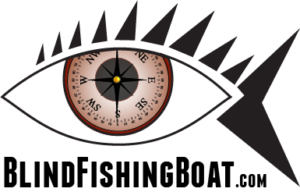Sharbot Lake Provincial Park GPS Trials
Three days of GPS Trekker trials on Black Lake, next to Sharbot Lake Provincial Park, were carried out in Late August. The weather was warm and still, and the body of water chosen for the trials was small and calm. In other words, the conditions were excellent for determining the effectiveness of the GPS Trekker device.
Much information about the effectiveness of GPS systems for those without sight exists on the internet, so I won’t attempt to provide a complete review of the Trekker device made by HumanWare. My observations are specific to boating and fishing only. Having said this, I can report that GPS works much as expected. Accuracy of WAI points are dependent on weather and satellite reception, and for this reason it’s worth paying attention to the weather and reception prior to heading out on the water.
An issue that quickly arose during testing is the signal scrambling that occurs at low speeds. Scrambling takes the form of widely ranging directional information being communicated by the talking GPS unit resulting from satellite scrambling codes maintained by the US government. This erratic feedback can be misleading as one isn’t necessarily aware that information may be scrambled since one could easily attribute it to Boat movement. This is what happened to me at first. No matter how slowly I drove, and no matter how precisely I responded to each new course heading announced every ten seconds, I just couldn’t get the boat to travel in a straight line. What in fact was happening was that I was responding with helm commands to sporadic non-contiguous course headings. My son said it looked like I was driving drunk…
I eventually determined that the GPS Trekker system can only provide consistently valid route information when moving at a speed between 2/3 and wide open throttle. Technicians at humanware confirmed my observation and said that one needs to be moving at a speed no less than 4kph for the user to receive valid feedback. Moving less than this speed will result in false information being sent to the device and then communicated to the user. For this reason, GPS can not be relied on for traveling routes set out for trolling. It’s been reported that the US government may reduce satellite scrambling in 2008, which would reduce the speed at which GPS can track without suffering the effects of signal scrambling.
Talking GPS devices can also suffer from the same response lag issue as talking compasses, in that the announced direction can be different than the direction one is currently traveling if the pilot is in the process of altering course while receiving feedback. Thus, only after a straight course has been resumed will the GPS announce precise information. For the pilot this means the boat needs to be underway and heading straight for a minimum period of time (about five seconds) before course readings from the Trekker GPS will be valid.
Advances in Humanware’s GPS Trekker will be interesting to trial next year. It’s hoped that the new “bread crumb” feature will be out by next spring. This will make it possible to record actual routes using the Trekker, and then navigate that exact route again, in either direction, at any time. Currently, one can only navigate in a straight line from one GPs recorded point to another. The present system requires that the pilot enter a new recorded point into the GPS search criteria each time one reaches a point that one was navigating towards. This can take valuable time and under certain conditions, can be hazardous if weather or water conditions are problematic. A difficult situation that could be compounded if the margin for error is slight such as in a narrow channel, river mouth or between islands.
Official Launch of the Porta-Bote:
After a number of trials were undertaken of the Porta-Bote configuration, I came to realize that offering the public a solid show of what I want the boat to be able to demonstrate was not possible at this time. While many of the systems came close to meeting my expectations, I did not feel that introducing the Boat in it’s full complexity would have been fair. More trials with different configurations and technologies is necessary before I’ll feel comfortable submitting the Boat to a rigorous examination. In the mean time, the public will continue to receive demonstrations of specific features of the boat through participation in public events. My hope is that this year, (2008), the Porta-Bote will be ready for a full demonstration.

Comments are closed.